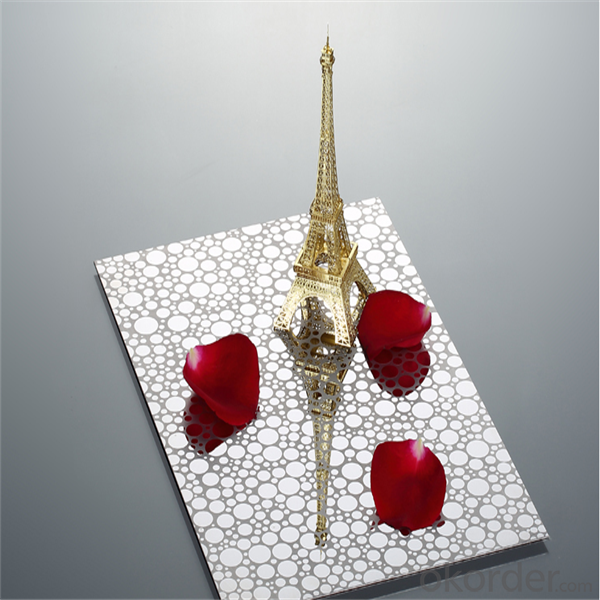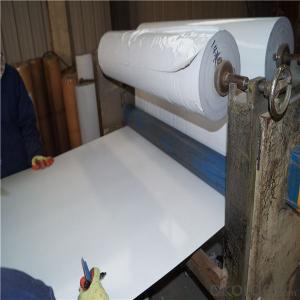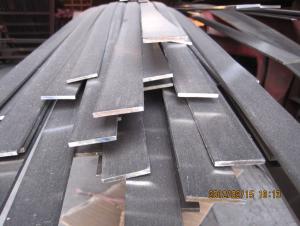Stainless Steel Sheets Per Ton Price in China
- Loading Port:
- Shanghai
- Payment Terms:
- TT OR LC
- Min Order Qty:
- 4 m.t.
- Supply Capability:
- 2000 m.t./month
OKorder Service Pledge
OKorder Financial Service
You Might Also Like
Specification
Stainless Steel Sheets Per Ton Price in China
Features Stainless Steel Sheets Per Ton Price in China:
1.Accurate dimension
2.Minimum mainenance
3.Excellent service life
4.Non Corrosive
5.Heat Resistant
Detail information Stainless Steel Sheets Per Ton Price in China:
1. Steel grade: 321,304,316l
2. Surface: 2B, BA, No. 4, 8K(mirror), HL, embossing, etching. And more than 100 different patterns for your choice.
3. Colors: Golden, rose golden, titanium golden coating, champagne golden, brown, bronze, titanium black, sapphire blue, purple, gray, silver, coffee champagne, jade-green, etc.
4. Thickness: 0.3-120mm
5. Width: 500mm, 1000mm, 1219mm, 1500mm, 1800. And length: Could be cut into any size as per customer's request. Usually our common sizes: 1219mm*2438mm (4*8ft), 1219mm*3048mm (4*10ft) and 1000mm*2000mm.
6 Supplier Product Code: SDJM
7. Competitive Advantages of the product
1) Stainless Steel Decorative Sheet
2) Customize pattern and color coating
3) Advantage: Various patterns, splendid decorative effect, fashionable design
4) Surface finish: Mirror, 2b, no.1, no.4, 6k, 8k, polished, etc
| Commodity | Stainless Steel Sheets Per Ton Price in China | |||||||
| Thickness | 0.3 mm-120mm | |||||||
| Width | 500mm, 1000mm, 1219mm, 1240mm, 1500mm, 1800mm, 2000mm, etc | |||||||
| Length | 1000mm-6000mm or as customer request | |||||||
| Standard | AISI, ASTM, EN, BS, SUS, DIN, JIS, etc | |||||||
| Material | 201, 202, 301, 321, 304, 304L, 316, 316L, 309S, 310S, 410, 410S, etc | |||||||
| Surface | 2B, BA, HL, 8K, No. 4, etc | |||||||
| Brand name | TISCO, LISCO, JISCO, ZPSS, BAOSTEEL, etc | |||||||
| Packaging | Standard export sea-worthy packing | |||||||
| Technique | Hot rolled / cold rolled | |||||||
| Delivery time | Within 7-10 days after receive your desipot | |||||||
| Supply ability | 500 metric tons/ week | |||||||
| Certification: | ISO9001: 2008 | |||||||
| Payment terms | 30% T/T as deposit and the balance should be paid by L/C or against copy of B/L | |||||||
| Applications | 201 Stainless Steel hot rolled plate applies to construction field, ships building industry, petroleum and chemical industries, war and electricity industries, food processing and medical industry, boiler heat exchanger, machinery and hardware fields. | |||||||
| Advantages | Strong corrosion and decorative effect; Excellent and high quality control; competitive price; Timely, reliable and efficient delivery; Customer service. Cheap, better, faster | |||||||
| Note | We can produce other standard as the customers' requirement | |||||||


- Q: Do stainless steel sheets have a specific weight?
- Yes, stainless steel sheets have a specific weight. The weight of a stainless steel sheet depends on its dimensions (length, width, and thickness) as well as the specific type and grade of stainless steel used.
- Q: 304 stainless steel plate surface quality inspection method which has several?
- 304 stainless steel surface quality of pickling process mainly depends on the heat treatment, surface oxidation Pihou formation if heat treatment before a process, or organization is not uniform, with acid does not improve the surface smoothness and uniformity. Therefore, attention should be paid to heat treatment or surface cleaning prior to heat treatment.
- Q: Are stainless steel sheets suitable for oil refineries?
- Yes, stainless steel sheets are suitable for oil refineries. Stainless steel is often chosen for its excellent resistance to corrosion, high temperature resistance, and durability. These properties make it highly suitable for the harsh conditions found in oil refineries, where the presence of corrosive chemicals, high temperatures, and constant exposure to moisture can be detrimental to other materials. Stainless steel sheets are commonly used in various applications within oil refineries, including storage tanks, pipelines, heat exchangers, and other equipment where corrosion resistance is crucial. Additionally, stainless steel sheets can be easily cleaned and maintained, which is important in maintaining the efficiency and functionality of equipment in oil refineries.
- Q: Can stainless steel sheets be used for solar panel frames?
- Yes, stainless steel sheets can be used for solar panel frames. Stainless steel is known for its durability, corrosion resistance, and high strength-to-weight ratio, making it an ideal material choice for constructing solar panel frames that need to withstand various weather conditions and support the weight of the panels.
- Q: What are the benefits of using embossed stainless steel sheets in elevator interiors?
- Embossed stainless steel sheets offer numerous advantages when used in elevator interiors. To begin with, the incorporation of embossed stainless steel sheets brings an element of elegance and sophistication to the elevator's overall design. The visually appealing embossed patterns on the surface enhance the aesthetic appeal of the interior space, making it particularly desirable in upscale residential complexes and commercial buildings where a luxurious ambiance is sought after. Moreover, these sheets are highly durable and resistant to wear and tear, making them an ideal choice for elevator interiors. Given the constant use and potential for scratches, dents, and other damages, the embossed pattern on the stainless steel surface helps conceal minor imperfections, ensuring that the interior maintains its pristine appearance for an extended period. Additionally, stainless steel's corrosion resistance makes it suitable for environments with high humidity levels, such as elevator shafts. Furthermore, maintaining and cleaning embossed stainless steel sheets is a breeze. Elevator interiors are often exposed to dirt, fingerprints, and other stains. However, the smooth surface of embossed stainless steel allows for easy wiping, ensuring that the interior always appears clean and well-maintained. This aspect is particularly crucial in public spaces where cleanliness plays a significant role in creating a positive impression on users. Additionally, embossed stainless steel sheets offer a high level of customization. They can be manufactured in various patterns, textures, and finishes, providing endless design possibilities. This versatility allows architects and designers to create unique and personalized elevator interiors that align with the desired theme or branding of a building. Furthermore, embossed stainless steel can easily be matched with other interior design elements, including flooring, lighting fixtures, and wall coverings. In conclusion, the utilization of embossed stainless steel sheets in elevator interiors provides numerous benefits. These advantages include heightened visual appeal, durability, ease of maintenance, and customization options. These qualities make embossed stainless steel an ideal material for elevators in various settings, from commercial buildings to residential complexes, thereby enhancing the overall design and adding value and elegance.
- Q: Can stainless steel sheets be used for outdoor signage or billboards?
- Yes, stainless steel sheets can be used for outdoor signage or billboards. Stainless steel is highly durable, weather-resistant, and corrosion-resistant, making it an excellent material choice for outdoor applications. It can withstand harsh weather conditions, including rain, snow, and UV exposure, without deteriorating or fading. Additionally, stainless steel sheets can be easily fabricated and customized to create visually appealing and long-lasting outdoor signage or billboards.
- Q: Can stainless steel sheets be cut or shaped?
- Indeed, specific requirements can be met by cutting or shaping stainless steel sheets. This adaptable material lends itself to facile manipulation through a variety of cutting and shaping techniques. The act of cutting stainless steel sheets can be accomplished using methodologies including shearing, laser cutting, or waterjet cutting. Shape alteration of stainless steel sheets can be realized through procedures such as bending, rolling, or stamping. The application of these techniques permits the creation of diverse forms and designs, rendering stainless steel sheets a favored selection in industries such as construction, automotive, and manufacturing.
- Q: Is the cold rolled steel plate good or the stainless steel plate?
- The cold rolled steel itself, whether washed by acid car wash, semi-finished products, or rolled out by cold rolling mill semi-finished products, their rust resistance is very poor. It is easy to oxidize, resulting in rust on the surface of the air. It will not rust until it has been plated with aluminum or zinc, and it is clear that the process is complex and unsafe.
- Q: Can stainless steel sheets be custom-cut?
- Stainless steel sheets have the capability to be tailored to specific sizes and dimensions. This adaptable material can be easily molded and formed to meet individual needs. The custom-cutting of stainless steel sheets is widely practiced across multiple industries, including construction, manufacturing, and fabrication. This procedure guarantees a precise fit for various purposes, such as architectural projects, machinery components, or kitchen equipment. Expert metal fabricators or specialized service providers commonly employ advanced techniques like laser cutting, waterjet cutting, or shearing to accurately customize stainless steel sheets according to desired specifications.
- Q: Are stainless steel sheets suitable for outdoor sculptures or artwork?
- Outdoor sculptures or artwork can greatly benefit from the use of stainless steel sheets. This material is renowned for its exceptional durability and resistance to corrosion and weathering, making it the ideal choice for outdoor installations. Regardless of the harsh environmental conditions, such as rain, snow, UV rays, and temperature fluctuations, stainless steel retains its structural integrity and aesthetic appeal. Moreover, artists and designers can easily shape, cut, and weld stainless steel, allowing for the creation of intricate and complex sculptures. Its sleek and modern appearance also adds a contemporary touch to any outdoor setting. Additionally, stainless steel requires minimal maintenance and can maintain its original finish for an extended period, making it a cost-effective option for outdoor sculptures or artwork. In conclusion, stainless steel sheets are an excellent material choice for creating visually appealing and long-lasting outdoor artworks.
Send your message to us
Stainless Steel Sheets Per Ton Price in China
- Loading Port:
- Shanghai
- Payment Terms:
- TT OR LC
- Min Order Qty:
- 4 m.t.
- Supply Capability:
- 2000 m.t./month
OKorder Service Pledge
OKorder Financial Service
Similar products
Hot products
Hot Searches
Related keywords






























